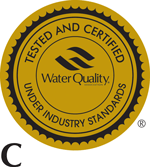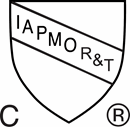Infographic: Finding a drinking water filter
Download in PDF format
(287 KB, 3 pages)
Organization: Health Canada
Published: 2023-04-18
Pub.: 220594
ISBN: 978-0-660-46388-9
Cat.: H144-114/2023E-PDF
Point of use filters
Point of use, or POU, drinking water filters are used to remove impurities from water where the water is being used. Learn more about POU filters used in filtration systems:
- attached directly to faucets
- inserted into water pitchers and bottles
- inserted into refrigerators for water dispensers and ice makers
How to tell if a POU filter has been certified to reduce lead
The Standards Council of Canada has accredited several third-party certification bodies to evaluate POU drinking water filters for lead reduction. Each certification body uses a registered trademark on certified products. The certification marks table provides the certification bodies' approved marks and the text indicating a filter has been certified for lead reduction capabilities. Some filters can be certified by more than 1 certification body and may have more than 1 certification mark on the packaging.
Certification bodies require their mark and a statement indicating testing against NSF/ANSI Standard 53 along with a claim of lead reduction. We recommend that you also look for filters tested against NSF/ANSI Standard 42 for particulate reduction (Class I)Footnote *.
Note: Filters certified to CSA B483.1 also meet contaminant reduction requirements specified in NSF/ANSI 53 as noted on the label.
- Footnote *
-
Although particulate reduction (Class I) is for aesthetic effects, it is recommended since some particulates can contain lead.
 Source: System Tested and Certified by NSF International against NSF/ANSI Standard 53 for the reduction of lead.
Source: System Tested and Certified by NSF International against NSF/ANSI Standard 53 for the reduction of lead.
Text equivalent
Certification mark for NSF International. A blue circle with the letters NSF inside.
 Source: System Tested and Certified by NSF International against NSF/ANSI Standard 53 for the reduction of lead.
Source: System Tested and Certified by NSF International against NSF/ANSI Standard 53 for the reduction of lead.
Text equivalent
Certification mark for NSF International independent testing. A blue circle with the letters NSF and words “INDEPENDENTLY CERTIFIED” inside.

Text equivalent
Certification mark for Water Quality Association. A gold circle with the words “Tested and certified under industry standards” inside.

Text equivalent
Certification mark for Water Quality Association independent testing. A gold circle with the letters WQA and words “Tested and certified independently” inside.

Source:
- Example text on packaging: Tested and Certified by (name of certification body) against NSF/ANSI Standards 42 and 53 for the claims specified on the performance data sheet.
- Some companies may indicate lead reduction in the text, or might simply state NSF/ANSI 53 or NSF/ANSI 42 above or below the mark.
Text equivalent
Certification mark for CSA Group. The letters CSA written in the shape of a circle, with the words “drinking water NSF/ANSI 53” right below it.

Source:
- Example text on packaging: Tested and Certified by (name of certification body) against NSF/ANSI Standards 42 and 53 for the claims specified on the performance data sheet.
- Some companies may indicate lead reduction in the text, or might simply state NSF/ANSI 53 or NSF/ANSI 42 above or below the mark.
Text equivalent
Certification mark for CSA Group. The letters CSA written in the shape of a circle, with the words “drinking water B483.1” right below it.

Source: For UL, text must be located underneath the mark. The File No. is a unique product identification number.
Text equivalent
Certification mark for Underwriters Laboratory. A black and white seal with the letters UL certified inside, and a black box with the product identification number is below the seal.

Text equivalent
Certification mark for the International Association of Plumbing and Mechanical Officials Research and Testing. Black lettering IAPMO R&T inside a shield outline.

Text equivalent
Certification mark for the International Association of Plumbing and Mechanical Officials, for water-conveying products. Black lettering IAPMO T inside a shield outline.

Text equivalent
Certification mark for the International Association of Plumbing and Mechanical Officials for components. Black lettering IAPMO C inside a triangle outline.
Certification for POU drinking water filters
There is no federal requirement for testing or third-party certification in Canada, however some provinces or territories may have testing or third-party certification requirements. We recommend that you look for filters that have been tested by an accredited third-party certification body for lead reduction and particulate reduction (Class I) capabilities against both NSF/ANSI Standards 42 and 53.
What to look for on filter packaging
You should look for certification marks, NSF/ANSI Standards 42 and 53 text, and claims of lead reduction and particulate reduction (Class I). All certification marks should have a letter C in the lower left hand corner to designate that they are accredited in Canada.
Where certification marks and standards text are located
You can find the certification marks on the filter or on the package. NSF/ANSI Standards 42 and 53 text will be under or near a certification mark. If lead reduction and particulate reduction (Class I) aren't specifically mentioned in the text, you can find information:
- in a table on the packaging
- in the certifier's online product listing directory
- on the performance data sheet located on the manufacturer's website or inside the filter box or other packaging (see the example)
| Substance | Overall percent reduction | Influent challenge concentration | NSF maximum permissible product water concentration |
|---|---|---|---|
| NSF/ANSI Standard 53: Health effects | |||
| Lead pH 6.5 | 99.5 % | 150±15 µg/L | 5 µg/L |
| Lead pH 8.5 | 99.6 % | 150±15 µg/L | 5 µg/L |
| Mercury pH 6.5 | 95.5 % | 6±0,6 µg/L | 2 µg/L |
| Mercury pH 8.5 | 95.9 % | 6±0,6 µg/L | 2 µg/L |
| Cadmium pH 6.5 | 97.4 % | 30±3 µg/L | 5 µg/L |
| Cadmium pH 8.5 | 99.2 % | 30±3 µg/L | 5 µg/L |
| Benzene | 93.5 % | 15±1,5 µg/L | 5 µg/L |
| Asbestos | >99 % | 55000000±45000000 Fibres/L | 99 %Footnote * |
| NSF/ANSI Standard 401: Emerging compounds/incidental contaminants | |||
| Bisphenol AFootnote † | 95.5 % | 2000±400 ng/L | 300 ppt |
| Estrone Footnote † | 96.4 % | 140±28 ng/L | 20 ppt |
| Ibuprofen Footnote † | 94.9 % | 400±80 ng/L | 60 ppt |
| Naproxen Footnote † | 96.4 % | 140±28 ng/L | 20 ppt |
| Nonyl phenol Footnote † | 93.5 % | 1400±280 ng/L | 200 ppt |
| NSF/ANSI Standard 401: Aesthetic effects | |||
| Chlorine | 97.4 % | 3.0±0.2 µg/L | 50 %Footnote * |
| Particulate reduction Class I | 99.6 % | >10000 particles/mL | 85Footnote * |
- Claim of lead reduction
- Note that ppb and µg/L are equivalent methods of measurement
- Claim of particulate reduction (Class I)
- Footnote *
-
NSF minimum percent reduction requirement
- Footnote †
-
Valid for the following systems : Ultramax Jet Black (OB24), Space Saver (OB32), Grand Color Series (OB36), Pacifica (OB41), Capri (OB43), Mini Plus (OB44), Marina (OB47), Monterey (OB50), and Wave (OB53)
These systems have been tested according to NSF/ANSI Standard 401 (for applicable systems), 42 and 53 for reduction of the substances listed. The concentration of each of the indicated substances in water entering the systems was reduced to a concentration less than or equal to the permissible limit for water leaving the systems, as specified in NSF/ANSI Standard 401, 42 and 53.
Additional resources
Questions
- For questions about a filter: Contact the product manufacture
Page details
- Date modified:
